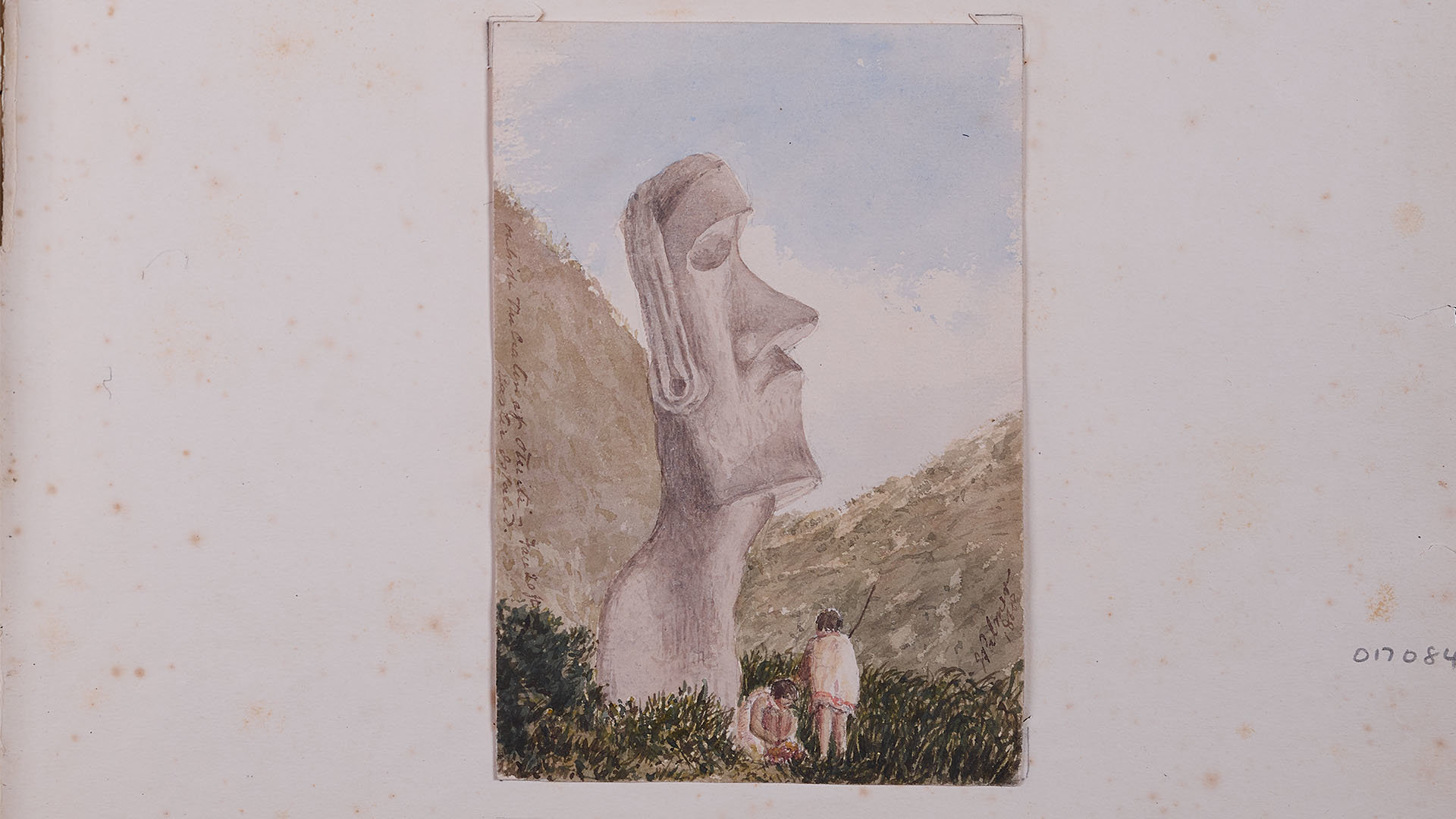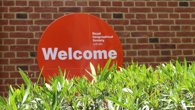Since its foundation in 1830, the Royal Geographical Society has collected watercolours and drawings, which complement its wider holdings of maps, library, archive, artefact, film, and photographic items. Many of these rare and fragile images predate the invention of photography as a method of observation and give modern audiences a glimpse into remarkable journeys, often at sea.
At the heart of the Society’s watercolour and drawing collection lie ten elephant folio travel albums containing over 500 images created by John Linton Palmer (1824-1903), a British naval officer who served on board various ships between 1850 and 1868.
His voyages took him across the world and included destinations such as Chile, Peru, Panama, China, Tahiti, the Northwest coast of America, Alaska, and Easter Island.
On 24 January 1866 he was commissioned as surgeon on HMS Topaze, under the command of Commodore 2nd Class Richard A. Powell and it is during this voyage that many of his first works were created.
Recording a lifetime at sea
Linton Palmer created the travel albums after he retired from active service in 1874. Each album includes work cut from Linton Palmer’s original sketchbooks (none of which survive today), along with ephemera and the occasional watercolour by another hand.
His work shows great dexterity and an innate understanding of the need to document the people, cultures, and places that he and his fellow travellers encountered. Taken as a body of work, the albums represent an almost complete visual record of a lifetime at sea.

A visual record of nature, charting and navigation
Sketches made ‘in the moment’ provided the viewer with a great deal of information about the natural world, including the formation of clouds, flora, and fauna. Accuracy of drawing and colorization provided a guarantee against later imaginative reinterpretation of what was seen.
From a naval perspective, the charting of coastlines in sketches and watercolours was also of critical importance. From the time of Captain James Cook, drawing was taught to all naval cadets. The artist’s visual record was seen as an important contribution to the complex and multi-skilled process of charting and navigation involving many onboard: a pictorial highlight.
The lay-out and order of the work is by Linton Palmer’s hand, and in many cases, sketches are held within small cuts in the paper of the album page, to make for ease of removal, suggesting that he would share and exhibit his work.
It is known that in the 1870s and 1880s he regularly gave illustrated lectures and exhibited his work in Liverpool. The accompanying captions provide us with a rich source of metadata about locations and subjects drawn.
Restoration process of the albums
The albums have sustained wear and tear commensurate with their age, and the Rapa Nui album was in much worse condition than the other albums, perhaps not surprising given its content has contributed significantly to contemporary research and understanding of material memories of travel.
As custodians of such a precious item the society was keen to have this repaired to avoid the risk of serious damage from further access and use. In spring 2024 specialist paper conservators visited the Foyle Reading Room to inspect the album with a view to suggesting a programme of work to stabilise and conserve it so that it can again be available for use by researchers.
The recommendation was for the creation of a new, slightly larger album from archival quality paper and to recreate the original album by transferring the watercolours and blocks of text from the disintegrating album to the new album.
The original red cloth, gold tooled cover, could be substantially reused for the new album.
Special thanks
Specialist conservation work on this album with great historical significance has recently been made possible through a generous gift in the will from Society Fellow Ann Shirley, and a grant from the Geographical Club.
Ann was dedicated to the society for over sixty years and was also an active researcher in our collections. We were delighted to commit both her legacy gift restricted ‘for the care of elderly collections’, and the Geographical Club grant to fund the bulk of this vital restoration work.
How you can support us
If you are interested to learn more about how you could support the Royal Geographical Society’s work, please contact the Development office: Christine James FRGS either by phone 02075913007 or email development@rgs.org

